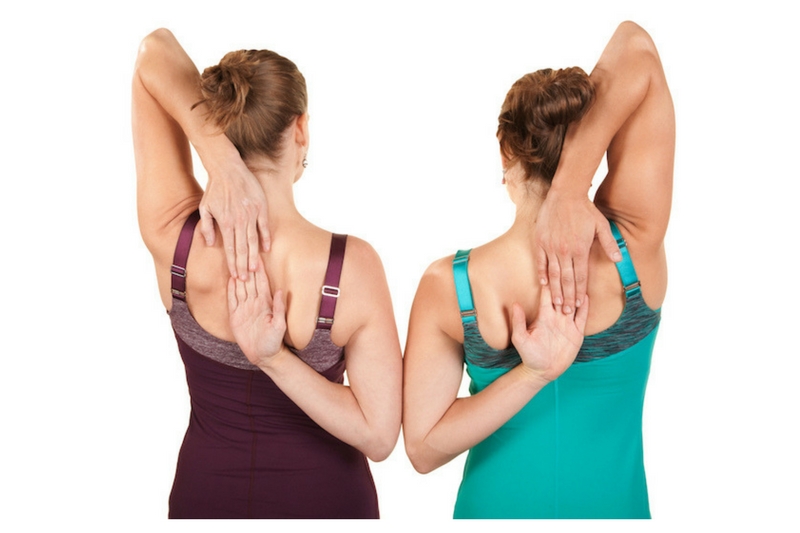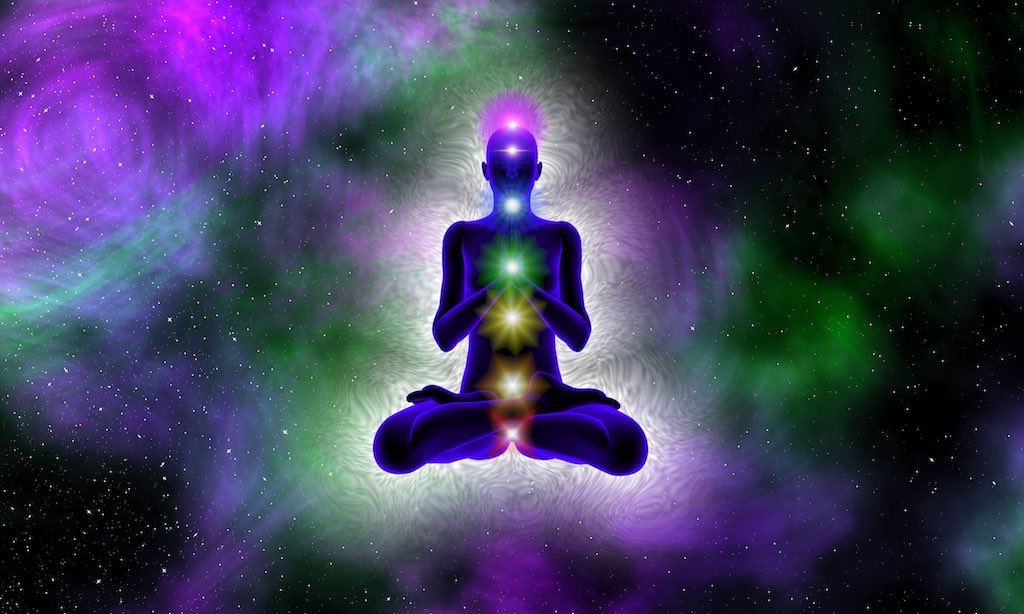The post Frozen Shoulder Exercises and How to Treat it. appeared first on MetaMed.
]]>Contrary to current recommendations this condition can be effectively treated using integrative manual therapy and prescribing appropriate frozen shoulder exercises and stretches (recently an article was published supporting the use manual therapy in frozen shoulder recovery- see below). So please don't listen if you've been told there is nothing you can do for frozen shoulder!
You may still have to go through the experience however having it diagnosed early, the right treatment and rehab can mean you don't live with residual symptoms longer than you have to.
Common Frozen Shoulder Causes
This condition commonly affects women more than men from the age of 40 and can be categorised as:
- Primary or idiopathic, meaning there is no known cause. Frustrating right?!
- Secondary, where a specific cause can be identified ie. trauma, immobilisation such as a sling or cast, frozen shoulder after surgery, related to systemic disease such as diabetes or thyroid dysfunction.
We'll focus on the idiopathic frozen shoulder as I've identified a common theme amongst patients experiencing this painful and debilitating condition which apparently has no cause.
Symptoms of Frozen Shoulder
Firstly frozen shoulder often gets diagnosed very late once significant amounts of pain and restless nights have been endured. It's only when the shoulder range is clearly limited or ‘stuck' that it is diagnosed.
If the signs and symptoms are diagnosed early as potential frozen shoulder, for practitioners- letting a patient know how it will run its course and what they can do to help can often make the journey easier.
So how do we identify frozen shoulder in its early stages when there is no known trigger?
Typically frozen shoulder can last an average of 6-24 months and goes through three phases.
- Freezing
- Frozen
- Thawing
Frozen Shoulder Stages
Phase 1 – Freezing
The freezing stage can last from 2 – 9 months. It's the pain predominant phase with increasing levels of pain and progressive stiffening of the joint. Patient's will often complain of pain that is more present at night time disturbing their sleep, but they feel fine during the day. The pain is often felt deep inside the shoulder joint and radiates down the front of their bicep, there can also be pain between the shoulder blades and compensation pain in the neck. Pain medication such as analgesics and anti-inflammatories have limited effect if any.
Phase 2 – Frozen
The frozen stage can last from 4 – 12 months and is the stiffness predominant phase. This is where there is gradual reduction of pain but stiffness persists with considerable restriction in range of motion. During this stage, strong treatment can be applied to release the tension and encourage the capsule to stretch open.
Phase 3 – Thawing
This is when the shoulder starts to defrost Lasting 12-42 months. This is the resolution or freedom phase, where there is an improvement in range of motion with resolution of stiffness. Getting back to normal function and using the shoulder for what it's made for.
Frozen Shoulder Tests
This can be a good time do a couple of tests which I've found help with the diagnoses of frozen shoulder earlier rather than later. They're also great exercises to introduce at later stages. These are the Apley scratch test and a position of supine lying with hands placed behind the head.
Apley Scratch Test

This is useful to monitor the progression of joint stiffening. For practitioners not used to seeing frozen shoulder you may use this test often and just wonder why the patient's hand is slowly not able to reach behind their back.
You're looking for the range of internal rotation and adduction (the arm that reaches behind the back and up the spine). Usually, a patient's dominant arm will be limited with this motion but most people will be able to reach to at least the bottom of the shoulder blades.
In severe cases, a patient may only be able to reach to their sacrum (tail bone) or buttocks. Test this every time you see a patient if you suspect frozen shoulder.
Supine Lying Hands Behind Head

Laying supine (on your back) with then elbows bent and hands under the back of the head. In the early stages of frozen shoulder most patients cannot externally rotate their shoulder very well, this is a clear and easy way to see a discrepancy.
If they are unable to lay with the elbow flaying out to the side evenly (affected side is raised) this can indicate a restriction associated with the early stages of frozen shoulder.
So if this condition is idiopathic meaning there is no known cause, what is the cause?
One thing I've identified in all patients I have treated with frozen shoulder is significantly high levels of stress. Stress they feel that they are dealing with and not really feeling mentally, almost in denial about it… but their body tells me otherwise. What causes this? I'll give you some examples that have commonly come up.
- Caring for a loved one with a terminal illness, this may be a friend or family member near or far, trying to continually support others around you emotionally or physically.
- Being the soundboard for someone's emotional baggage you just can't cope with but keep trying to be their anyway, or physically giving out your energy to help others.
So how do emotions cause pain and injury in our body? This is the practice of psychosomatic therapy. Our body is complex in it's working, and at the same time incredibly clever. The mind-body connection is fascinating and how our body presents is a story of what it has been through. Emotions can manifest as physical discomfort, pain or predispose a tissue to weakness and injury.
If we chose to ignore the signs the body just says ‘ok, you're not hearing me, let me speak a little louder'. Most of us have experienced little niggles that we push aside because more important things have to get done only to have to deal with a strained muscle, a crook back or a raging headache because the body just had enough. The same probably happened with your frozen shoulder, it's just a little niggly, and a bit uncomfortable at night but…
‘I'm going to push on because compared to what my friend is going through, this is nothing'.
And you keep pushing until the body has no energy left and it hits you with this condition that affects your function and ability to do some of the easiest most mundane tasks every day. You can't wash your hair properly, you can't wipe yourself after the toilet, dress yourself, prepare meals, eat, lift, reach, drive!!! Yet you still keep pushing on…

Psychosomatic Interpretation
Frozen shoulder can be interpreted as frozen tears, taking on the weight of the world and responsibilities, feeling overwhelmed, not listening to yourself, suppressing your feelings and controlling situations and people around you.
The shoulders lay between our heart and throat chakra.
Our heart chakra governs emotions around love- giving and receiving love, nurture and unconditional love.
The throat chakra governs emotions around expression- how we speak up and stand up for ourselves, voice our opinions and emotions.
When the right shoulder is affected it often relates to driving too much of the masculine energy: doing, active, physical. When the left shoulder is affected this relates to the feminine energy, in particular emotions and giving of emotional support.
Frozen shoulder like any injury is your body telling you it's not coping, that you need to stop, something needs to change. To look after friends and loved ones you need to look after yourself, it seems selfish and counterintuitive but you would be much more help when you're pain-free, well rested and fully functioning.

Frozen Shoulder Relief
So now that you know a bit more about the lifespan of frozen shoulder, what can you do about it?
As a patient, seeking help from a therapist who has worked successfully in treating frozen shoulder is important, ask around and call clinics to check. Even better if you can find someone with a genuine interest in the mind-body connection to integrate this knowledge into treatment. If your frozen shoulder came on around the same time as stress levels peaking there's likely a lot of emotional tension built up in your tissues.
During the frozen stage strong treatment can be applied to release the tension in the muscles as well as open and stretch the capsule I tend to use dry needling to reduce muscular trigger points and strong positional releases utilised in Osteopathy to encourage an increase in the range of motion. Frozen shoulder is often associated with controlling emotions so it can be a challenge to let go into some positional releases.
It's not uncommon when being treated to resist the treatment for fear of making an already painful condition worse. Pain is emotional and the emotions need to release. This is one condition where I like to encourage my patients to push through a little. The effectiveness of treatment relies on your ability to surrender and let go. This can mean a release of a whole bunch of emotions you never knew you had and were storing in an effort to keep on going and not let anyone know there's anything wrong with you. Tears, swearing, even a cathartic scream is great… then feel your shoulder open up.
Frozen Shoulder Exercises
In later stages when you've got good functional movement in the arm, but it's still not 100% the best thing to do to continue to progress between treatments is stretch and exercise. This is a good time to return to normal exercise. Swimming and Yoga are both great options.

Swimming
Backstroke and freestyle are preferred over breaststroke to help the shoulder open up. Try holding a kick-board with outstretched arms and flutter kick. If you're not a natural swimmer though we recommend you may cause yourself more issues than benefit.

Yoga
Yoga is great because it often gets you into poses and movements you don't do day to day, it has an energetic and emotional quality to it and works with your breath, helping to ease stress and tension and release emotions.
- Child's Pose, in particular is a great one. This pose is actually the pose of ‘surrender' so it's quite fitting. Sit in this pose for up to 2-5 minutes, work with a slow and steady breath as the capsule opens and your arms reach forward inch by inch.
- The bind or Apley's scratch as mentioned earlier as a test to help in the diagnosis of frozen shoulder. I often suggest patient's sit on a chair and reach behind their back and then sit back to hold the hand and shoulder in place. Again sit for 2-5 minutes.
Other Specific Exercises:
- Laying on your back with your hands behind your head
- Laying on your back relaxing with your arms overhead
- Externally rotating your shoulder with your upper arm horizontal and elbow bent to 90 degrees. You can hold a weight (can of beans or up to 1 kg) in the hand of the affected side, slowly allow the weight to drop your hand back to open up your shoulder. Sometimes you may need to have a little support of a pillow behind your hand otherwise you won't be able to relax.
For a handout on these exercises to download FROZEN SHOULDER EXERCISES
Build up from 2 minutes until you're comfortable with 5 minutes. Take the time out for yourself to nurture your body.
Often as you release the pose it will be uncomfortable, you're encouraging your body to go into a new position and it needs to adjust. Don't worry you're not doing more damage and any discomfort should subside within 10 minutes. If it doesn't check in with your practitioner to see if you need to change any of your exercises.
Can Stress Cause Shoulder Pain?
So for a condition that largely has no known cause I think emotional stress can be blamed. Annoying right? Yep, it's a hard one to work on because what lead to it are habits and patterns so deeply ingrained in us. Even taking time out to go to an appointment may seem difficult, to treat yourself. Or going to a yoga class because you could be using that time to do other things. Or to say no to someone, because who will help you if you don't help others?
Emotions are meant to flow through us not be stored in us. As you experience pain sit and observe the emotion that may be present.
Acknowledging can be a powerful tool in healing.
The busyness of doing stops us from being able to be present with our emotions and for them to be felt or expressed. Spend time doing the things you love, oh yeah you might need some time out to remember what they were!
Give yourself a break, you have one body and it's designed to teach you and enable you to enjoy life.

Other Treatment
There are other treatments which can be utilised to help you improve your frozen shoulder. Traditional Chinese Medicine (TCM) acupuncture can help. This works on a very different philosophy to dry needling. TCM acupuncture utilises meridians and channels and focuses on balancing the yin and yang as well as removing blockages to ‘qi' or energy in the body. The TCM approach is very individualised and can help pain levels, increasing the range of motion and balance out stress and assist with emotional resilience. Moxibustion is another technique that can be effective during the frozen stage. This is where the needle is warmed with a herb called moxa. Studies have shown it to be more effective than acupuncture for frozen shoulder alone in assisting with reducing pain and improving range of motion. TCM is great to use in combination with manual therapy for optimal results.
Diagnosing Frozen Shoulder
Imaging techniques such as x-ray, ultrasound and Magnetic Resonance Imaging (MRI) are of little help when diagnosing frozen shoulder. It is a condition that is diagnosed largely by clinical signs and symptoms as mentioned earlier: pain at night, shoulder pain that radiates to the bicep, progressive stiffening of the shoulder particularly restriction of external rotation.
You can have frozen shoulder imaged with x-ray. This won't show anything except bony structures which don't tend to be affected. Ultrasound is great for looking at tendons, muscles and organs, there may be a little inflammation of the bursa present or a minor rotator cuff tear but these often aren't the cause of frozen shoulder. Magnetic Resonance Imaging (MRI) can also show thickening of the capsule. Imaging can be useful to rule out more severe pathologies, and give you peace of mind that nothing else is going on, but it doesn't really change the course of treatment.
Surgery for Frozen Shoulder
There are surgical options available for frozen shoulder such as hydradilatation where saline is injected into the joint to blow out the capsule, or manipulation under anaesthesia where you are put the sleep and your shoulder is manipulated into full range of motion to stretch the capsule. These aren't always effective but are an option to consider. If surgery is not a readily available option and you are on a lengthy waitlist I encourage you to seek effective physical therapy, you might be surprised by the progress you make by the time your appointment with a specialist rolls around.
Our osteopaths and chiropractors love the challenge of treating this tricky condition. Integrating the emotional aspect to physical pain is pivotal in her approach to treating musculoskeletal conditions. If you know someone who has been diagnosed with frozen shoulder or you think this article may help them please share it with them.
Further reading:
Natural history of frozen shoulder- fact or fiction? A systematic review.
The post Frozen Shoulder Exercises and How to Treat it. appeared first on MetaMed.
]]>